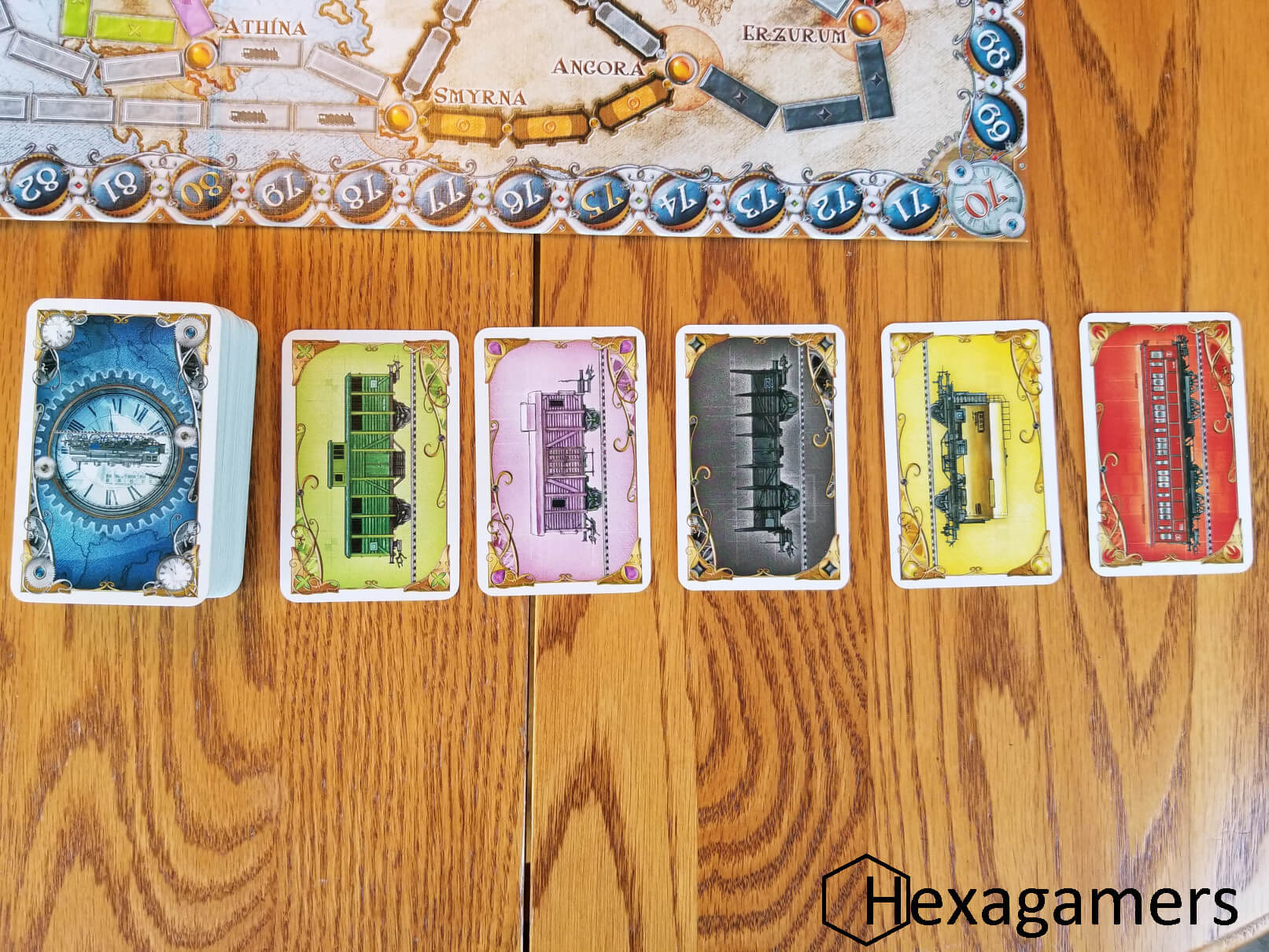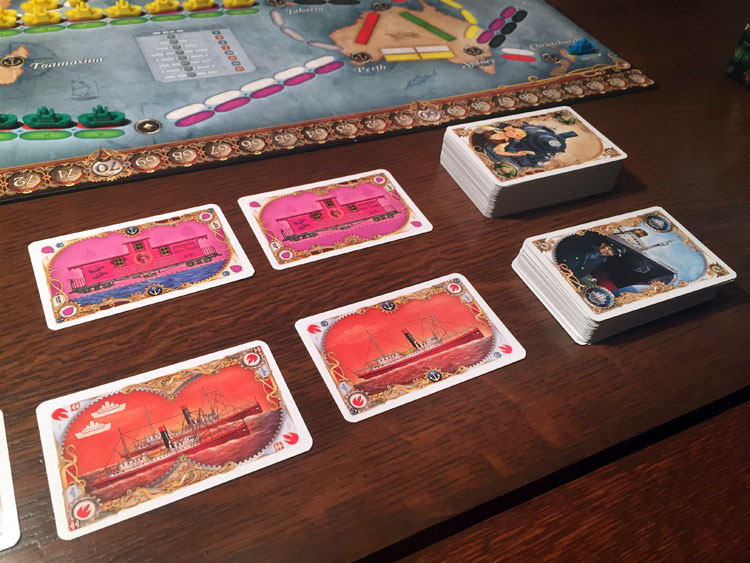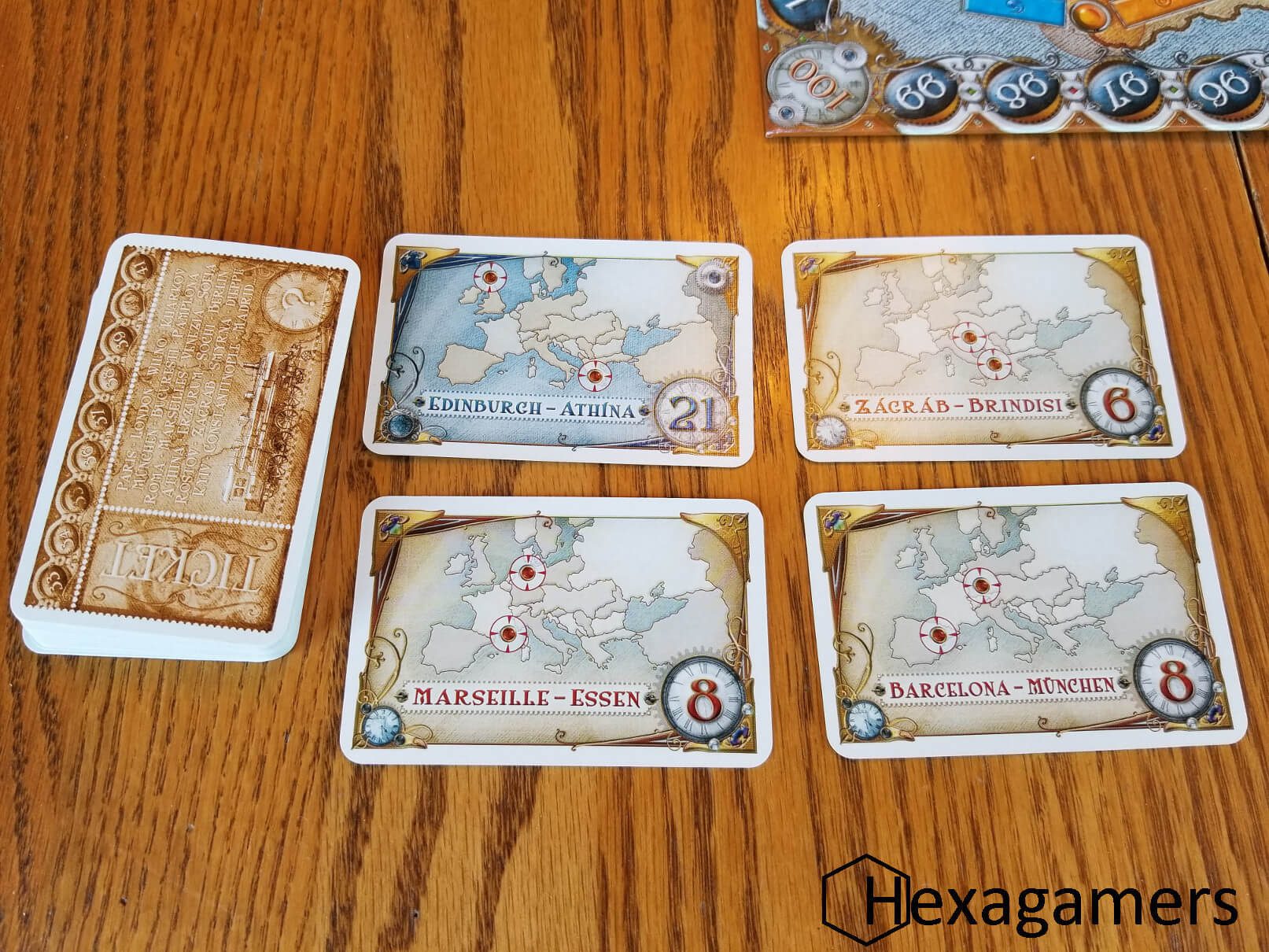
The only requirement is that you MUST keep at least one of them. Your third option is to draw 3 Destination Tickets. You can link cities all over the map without having previous connections. Also important to note is that you do NOT have to connect previously placed tracks. The same player may NOT control both routes. Some cities have “double-routes” which allow two players to link. Players score based on how long the link is, from 1 point to a one route length to a high of 15 for linking six sections of track. And, of course, locomotive wild cards may be used to complete any set of any color.) Once the cards are played, the player places his own color trains (the train color of the player has NO relationship to the color of the cards or the track) to claim that route (reminiscent of Union Pacific). (Should a route be colored “gray”, then ANY color set may be used to link. For example, if linking Portland to Salt Lake City, a player would need six BLUE Train Car cards to match the six links on the blue rails. In claiming a route, a player must play as many cards of ONE color equal to the number of spaces on a particular route that MATCHES the color of the route on the board. Should THREE wild cards appear among the five exposed cards, ALL of the exposed cards are discarded and a new set of five is drawn to replace them (a similarity to Showmanager). (If drawing from the exposed cards, the top draw pile card is immediately turned over to replace the taken card so there are always 5 cards available to choose.) If a locomotive card, which acts as a wild card and can match any other color Train card, is taken from the exposed cards, that player’s turn ends and he can only draw that one card. He may draw from one of the 5 exposed cards or draw the top card from the face down draw pile.

Players may draw up to 2 Train cards per turn. Players seek to score the highest point total by creating routes between cities, meeting their Destination Card requirements and completing the longest continuous rail route.Įach game turn allows the player to do ONE of three things: draw two Train cards, claim a route or draw additional Destination Cards. These cards remain hidden until final scoring. Warning: fail to construct that route and those points are DEDUCTED from your score! Players must keep at least two of the Destination cards dealt. A player able to construct a route linking those two cities will earn that point value at game’s end. Destination cards show two cities and a point value. Now, the Destination cards are shuffled and each player is dealt three of these. Five cards are drawn and placed face up alongside the board. The remaining Train cards become a draw stack. The Train Car cards are shuffled and each player starts with a hand of four cards. (Days of Wonder supplies an extra 3 trains in each color to protect against loss.) All scoring markers begin at 0 on the scoring track.

Scoring markers, Longest Path bonus card, 4 pages of rules and a few play aids round out the components.Įach player begins with a set of 45 trains in his chosen color. There are nicely molded plastic trains in blue, red, green, yellow and black, a deck of 110 Train Car cards (12 in each color – purple, white, blue, yellow, brown, black, red and green and 14 locomotive “wild cards”) and 30 Destination Ticket cards. Inside the deep box is a beautiful, large, mounted map of the United States showing colorful train routes linking major US cities (shades of Santa Fe!) framed with a scoring track on the perimeter. Ticket to Ride combines the feel of Moon’s own rail games (Santa Fe and Union Pacific ) – with TransAmerica (Summer 2002 GA REPORT) and adds a dash of Showmanager (Winter 1999 GA REPORT) to create a wonderful cross-country train game suitable for gamers and family alike.

Nowhere is that skill more evident than in his newest offering, Ticket to Ride. But Moon really shines at game development, in taking game ideas, mixing them together and adding that “something extra” to create a game greater than the sum of its parts. His Elfenland, for example, won German Game of the Year honors back in 1998. Reviewed by Herb Levy (Days of Wonder, 2-5 players, ages 8 and up, 30-60 minutes $39.95)Īlan Moon has earned lots of recognition for his game designs.


 0 kommentar(er)
0 kommentar(er)
